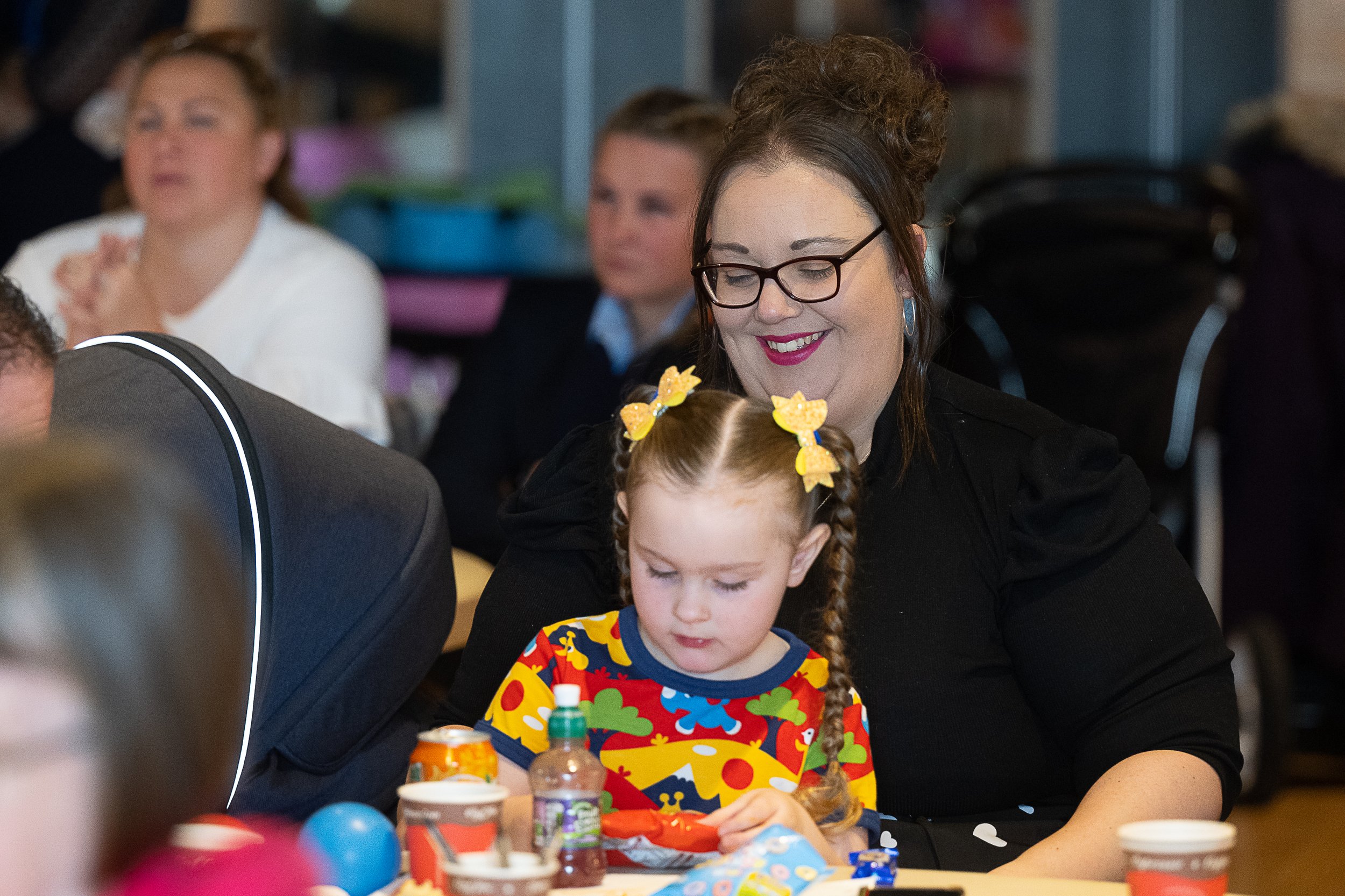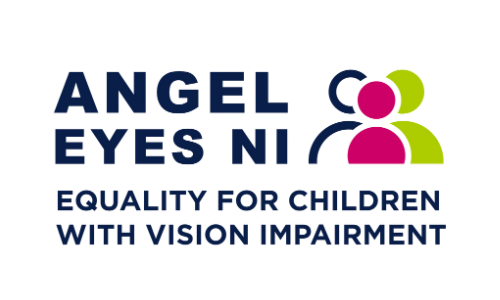You’re the expert
Your child’s development is unique, regardless of their level of vision impairment. You will have a different knowledge of your child and this information and your perceptions on him/her gives you this unique expertise no matter how many professionals are involved.
Let your child explore and learn, focus on their current skills, and involve them in everyday activities to promote their learning further. Encourage efforts towards independence by letting them have a go at dressing, undressing, feeding, and washing.
Get your child’s attention by calling their name first, this lets them know you are speaking to them directly. Use language your child understands to describe what you are doing so that they can begin to make associations with the tasks.
Take your time; daily routines, learning new experiences and play activities are likely to take a bit longer if you have a child with a visual impairment. Vision helps us to make sense of other sensory inputs that we experience, like where the loud noise came from, so when vision is weakened your child will struggle to make sense of the world around them. Give them time and verbal explanations.
Colour and contrast, uncluttered spaces, hands on experiences and giving your child plenty of opportunities to explore through their other senses will help them make sense of the world around them.

Helpful Information
The degree of sight loss varies depending on eye condition. Most people who have lifelong eye condition are registered as Sight Impaired (SI) or Severely Sight Impaired (SSI).
1. Vision is likely to vary during the day and is likely to be affected by emotional, lack of confidence and physical factors such as stress, tiredness, unfamiliar surroundings to mention a few. Maintaining eye contact may be difficult.
2. Most people registered SI will be text readers. They will find large text with extra line spacing between the lines easier to read. Some find a visual aid like a magnifier useful.
3. People with a visual impairment may be slow readers, this is usually because they need extra time to scan the text. This should not be taken as sign of poor reading ability. Extra time may be needed when taking exams or tests.
4. Computers and other technology can be very useful to people with VI. They can adjust position, brightness, tilt, character size, can experiment with colour/contrast and technology like screen readers.
5. If a person suffers from Nystagmus, (involuntary eye movement), they may tilt their head to find the ‘null point’ where eye movement is reduced, and vision improved, they may also move/nod their head to compensate this movement. These actions should not normally be discouraged, but discussed. You will get to know your child’s optimum ‘null point’ and can advise others.
6. Depth perception can be reduced, this will make them slower on stairs and may make them appear clumsier than most. Balance may also be affected, usually due to poor depth perception, they may struggle on uneven surfaces or climbing a slide ladder for example.
7. Getting about can also be affected, especially in unfamiliar surroundings. Crowded places, like supermarkets, may well produce tantrums and meltdowns. This is often because they are struggling to process all the visual information associated with the sounds associated with these places (sensory overload). Mobility and independent skills training programmes can help.
8. Work with your child at different times of the day to assess what lighting works best for them, task lighting can help with this, which can be sourced or discussed with professionals.
9. It can help to think of your child’s ‘viewing circle’ this is the area in which they see objects, floor space etc. If you imagine a hoop and think ‘What can my child, see inside this hoop?’ the hoop may be bigger or smaller than you think.

Well fitting frame
Children’s frames are not just a miniature version of adult frames - mature noses and cheeks are proportionally different than children’s. Kids’ frames are designed with this in mind.
A good well fitting frame is important, if a child can take part in the choice of frame this usually helps with the co-operation to wear the glasses. Your optometrist will help to make sure that the frame is right for your child. It is important to note that a child will not report that a frame is ‘tight’ or ‘loose’, as an adult would. As parents / teachers you can be very proactive in detecting any frame related problems early on.
Below are some quick guidelines to help check that the frame is fitting comfortably:
The sides of the frame are long enough to fit around the ears (curl sides can help glasses stay on younger children)
Check there is no redness around or at the back of the ears; or sides of the face
Check that the bridge doesn’t pinch, or cause redness or rubbing at the sides of the nose. Make sure the glasses aren’t allowed to slide down the nose, this is important to prevent the child from receiving the benefit of the glasses by looking over the top of the frames (or underneath if frames are too shallow)
Plenty of room around the lenses to allow air to flow around the eyes
Check that the frame isn’t bent or crooked; this is detrimental as the child will no longer be looking through the correct part of the lens and therefore will not see optimally
Plenty of room around the lenses to allow air to flow around the eyes
Spring hinges will increase durability
Impact resistant poly carbonate lenses are useful for very busy children
Be careful of nickel allergy; skin rash can occur if in contact with a metal frame. A titanium or plastic frame will resolve this problem
Check lenses are always clean and are not like ‘looking out of little dirty windows’! A spray and microfiber cloth are available from all optometrists. However very grubby lenses can be washed with washing up liquid and warm water, then dried with a soft tissue (not kitchen roll or paper towels as these can scratch lenses)
Everyone can learn to look after their glasses that little bit better by keeping them in their case at night or when your not wearing them. By removing glasses with two hands rather than one, prevents warping the frame. Never set glasses face down; this will prevent scratching the surface of the lenses
‘Comfort bridge’ nose pieces can make the fit more secure and comfortable
Your child is much more likely to wear his or her glasses if they are comfortable and fit properly.
‘Kids will be kids’ and it is much better that glasses are worn, than kept safe in a drawer. If your child has visual problems quite often they are entitled to a free second pair which can be kept just in case something happens to their everyday pair.
Children grow out of shoes & clothing quickly; and glasses are no different. By keeping a check on these points you can call into your local optician to adjust, repair or even replace the frame if necessary.

